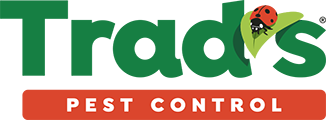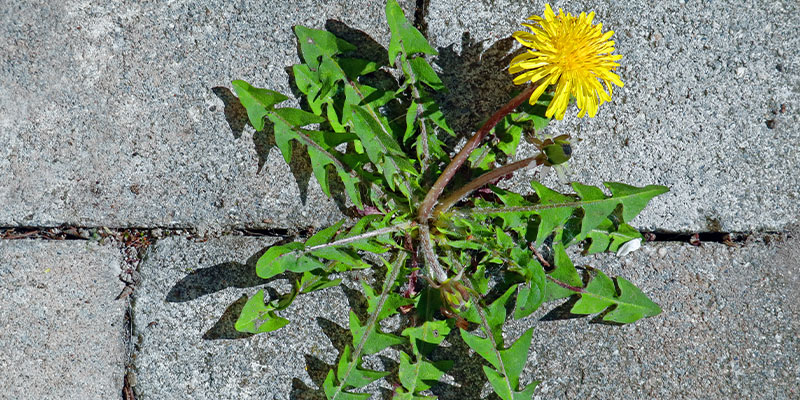Maintaining a healthy and vibrant lawn in Florida can be a challenge due to the state’s warm and humid climate, which is conducive to weed growth. Weeds are unwanted plants that compete with the desirable grass species, leading to an unsightly and weakened lawn. Implementing effective weed control measures is essential for homeowners to preserve the beauty and health of their lawns.
In what follows, we will explore why weed control is safe for lawns, the most common weeds in Florida, pests attracted to weeds, the potential damage they can cause, and the importance of weed control for homeowners. So, go ahead and read on to learn all about these things.
Weed Control: Why It’s Safe for Lawns
Modern weed control methods, when applied correctly, are generally safe for lawns and the environment. There are several weed control options available, including chemical herbicides, natural herbicides, mechanical removal, and cultural practices. Many herbicides are formulated to target specific weeds, minimizing the impact on desirable grass species when used according to the manufacturer’s guidelines.
Additionally, natural herbicides and manual weeding can be effective alternatives for homeowners concerned about chemical use. When implemented responsibly, weed control methods help preserve the health and aesthetics of lawns without causing harm to the surrounding environment.
Common Weeds in Florida
As already stated above, the Sunshine State’s warm and humid climate creates an ideal environment for the growth of various weeds. Some of the most common weeds found in Florida lawns include:
- Dollarweed (Hydrocotyle spp.). Dollarweed has rounded leaves resembling silver dollars and thrives in moist, shaded areas.
- Crabgrass (Digitaria spp.). This annual weed is known for its rapid growth and spreads quickly, particularly in thin or patchy lawns.
- Dandelion (Taraxacum officinale). Recognizable by its yellow flowers and fluffy seed heads, dandelion is a perennial weed commonly found in lawns.
- Nutsedge (Cyperus spp.). Also known as “nutgrass,” this tough perennial weed has triangular stems and is often found in poorly drained areas.
- Florida beggarweed (Desmodium tortuosum). Florida beggarweed is a summer annual weed that can quickly spread and crowd out your grass. It has small, yellow flowers and a sticky seed head.
- Palmetto (Serenoa repens). Palmetto is a perennial weed that can be difficult to control. It has long, sharp leaves and a thick, woody stem.
Also, sedges (Cyperaceae). Sedges are a type of grass weed that can be difficult to control. They often have long, narrow leaves and a triangular stem. And, just like those listed above, can prove difficult to eradicate.
Pests Attracted to Weeds
Weeds can act as magnets for various pests that can cause damage to lawns. So, these undesirable plants are not only unsightly and unwelcome, blemishing yards, they act as strong attractors for a few rather bothersome pests. Some common pests attracted to weeds in Florida include the following:
- Chinch bugs. Chinch bugs are drawn to lush, dense grass, and weeds can create the ideal environment for their rapid multiplication. These pests use their piercing-sucking mouthparts to extract plant juices from grass blades, leading to yellowish patches and eventual turf decline.
- White grubs. Grubs are the larvae of certain beetles and feed on grass roots, causing significant damage to lawns. Weeds can serve as a suitable habitat for adult beetles to lay their eggs, increasing the risk of grub infestations.
- Mosquitoes. Weedy areas with standing water can serve as breeding grounds for mosquitoes, which can transmit diseases to both humans and pets.
- Sod webworms. Sod webworms are caterpillars that feed on the roots of grass. They can cause patches of dead grass to appear on your lawn.
- Fire ants. Fire ants are a type of ant that can sting humans. They are often found in areas where there are weeds.
Then, if those aren’t enough, there are also snails and slugs. Snails and slugs are mollusks that feed on the leaves of grass. They can cause the leaves to become ragged and torn.
The Damage that These Pests Can Cause
The pests that are attracted to weeds can cause a significant amount of damage to your lawn. Some of the damage that these pests can cause include:
- Dead patches. Pests can cause patches of dead grass to appear on your lawn.
- Thin turf. Pests can cause the turf in your lawn to become thin and weak.
- Unsightly lawn. A lawn that is infested with weeds and pests can be unsightly and embarrassing.
Of course, what’s most unsettling and risky are the dangers posed by painful stings and more importantly, the possibility of being infected by a disease. As you can plainly see, weeds are more than just an ugly intruder, they attract more potentially serious problems.
Importance of Weed Control for Homeowners
Effective weed control is crucial for homeowners for several reasons. It’s not only wise to have this done because it keeps your lawn looking its best, but it also has a few other benefits too, including the following:
- Aesthetics. Alright; so this bears repeating. Weeds detract from the visual appeal of a lawn, making it appear unkempt and poorly maintained.
- Competition. Weeds compete with desirable grass species for essential nutrients, water, and sunlight, leading to weaker grass and sparse growth.
- Pest control. As mentioned earlier, weeds can attract pests that cause further damage to the lawn, leading to costly and time-consuming repairs.
- Property value. A well-maintained lawn enhances the overall value of a property, and weed-infested lawns can have a negative impact on home resale value.
Plus, weed control helps to prevent escalation. Controlling weeds promptly prevents their spread and further infestation, making it easier and less costly to manage the problem in the long run.
Summing All of It Up
Maintaining a healthy and weed-free lawn is essential for homeowners in Florida. Implementing safe and effective weed control measures helps preserve the beauty and health of the lawn while preventing pest infestations and other potential damages. Whether through chemical herbicides, natural methods, or manual removal, regular weed control practices are vital for homeowners to enjoy a lush and thriving lawn that enhances the overall appeal and value of their property.

